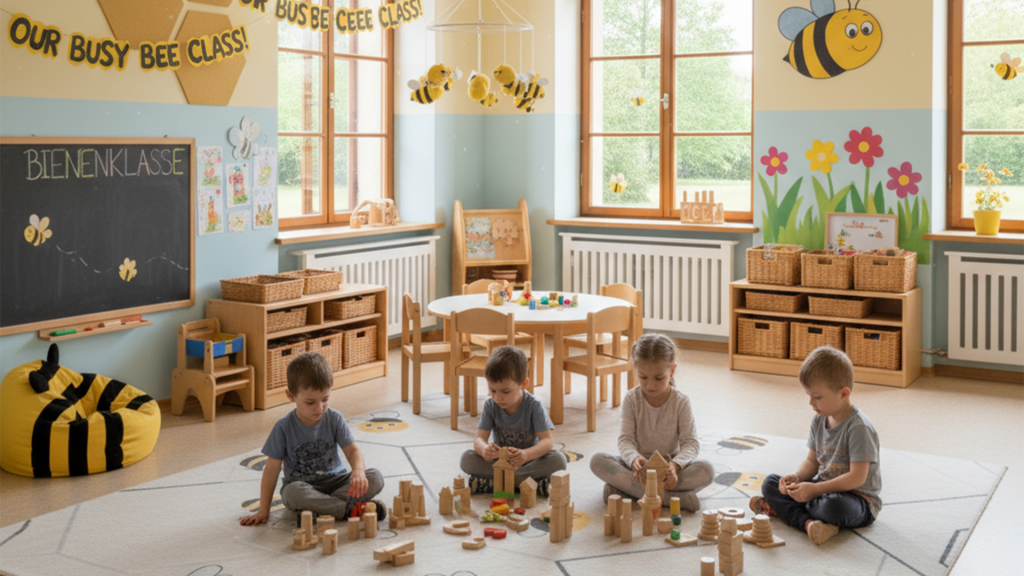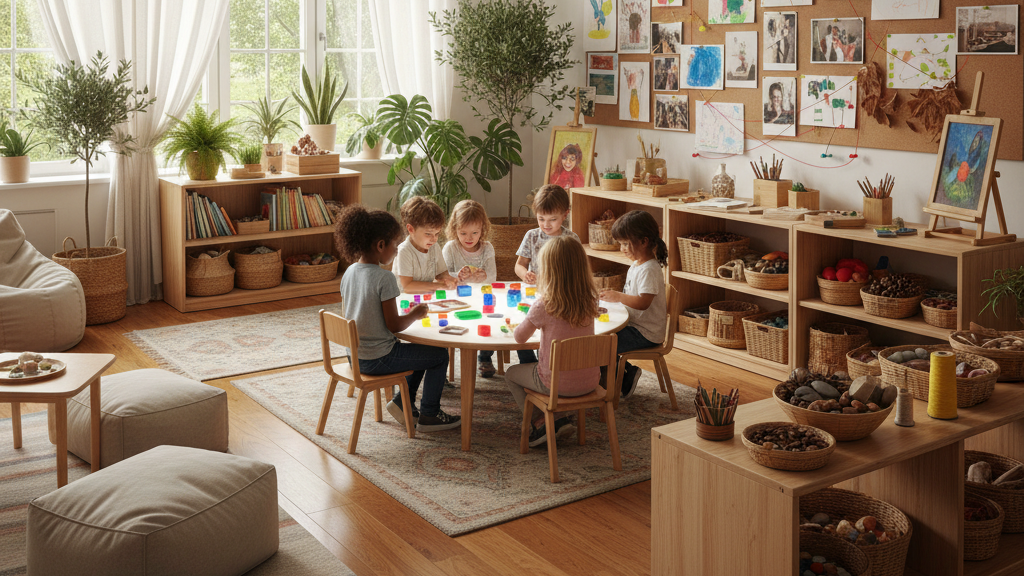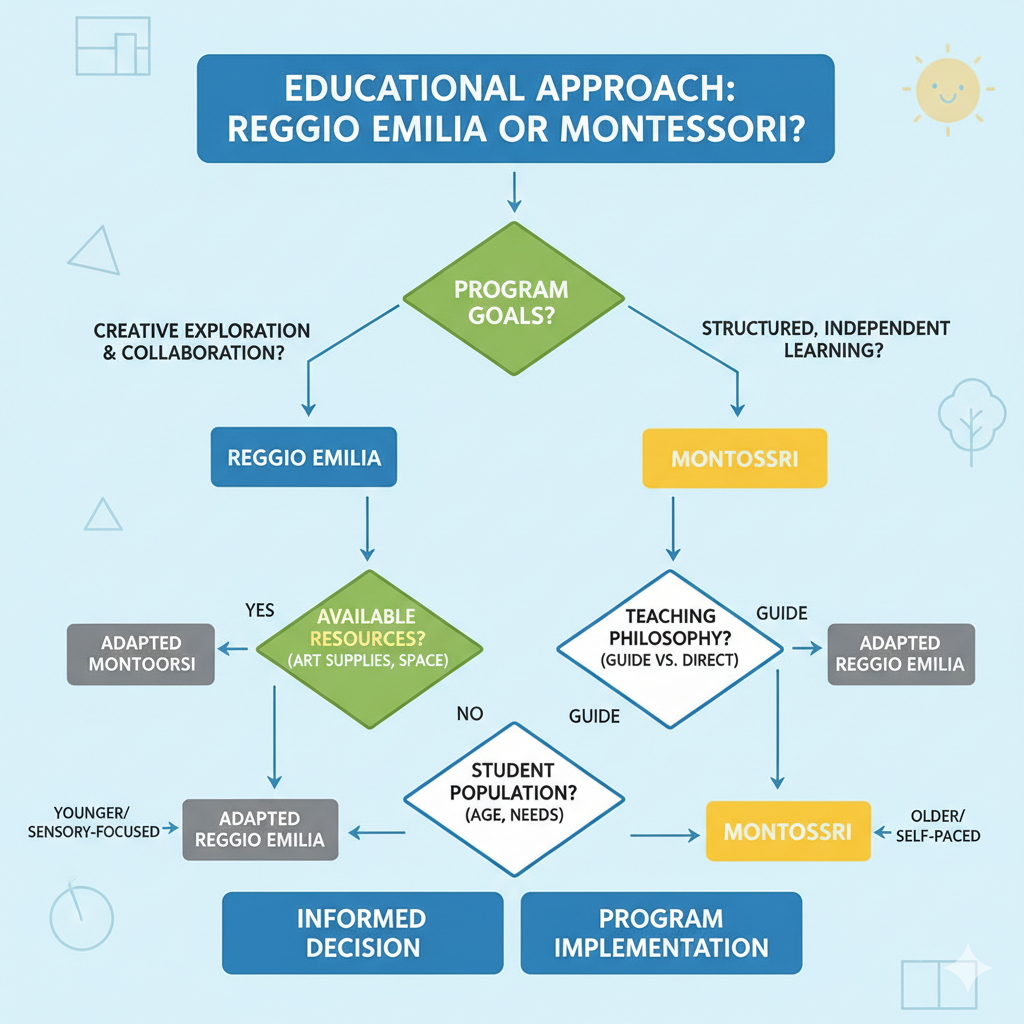Table of Contents
- Introduction: Understanding Two Revolutionary Educational Approaches
- What Is the Reggio Emilia Approach?
- What Is the Montessori Method?
- Reggio Emilia vs Montessori: Key Differences
- Reggio Emilia vs Montessori: Which Approach Is Better?
- How Wooden Educational Toys Support Both Methods
- Similarities Between Reggio Emilia and Montessori
- Implementation Considerations for Educational Institutions
- Frequently Asked Questions
Introduction: Understanding Two Revolutionary Educational Approaches
When choosing an educational philosophy for early childhood programs, the reggio emilia vs montessori debate often surfaces as one of the most important decisions for educators and parents. Both methodologies have transformed how we understand child development, yet they differ significantly in their approach to learning, teacher involvement, and classroom structure.

This comprehensive guide examines the reggio emilia approach vs montessori method, helping educators, school administrators, and educational institutions understand which philosophy aligns with their teaching goals and student needs. Whether you’re establishing a new preschool program or transitioning from traditional education models, this comparison provides actionable insights backed by educational research and practical experience.
What Is the Reggio Emilia Approach?
The Reggio Emilia philosophy originated in post-World War II Italy, developed by educator Loris Malaguzzi and parents in the town of Reggio Emilia. This progressive approach views children as capable, curious individuals with inherent potential for learning through relationships and experiences.
Core Principles of Reggio Emilia:
Emergent Curriculum: Unlike predetermined lesson plans, the Reggio Emilia curriculum evolves organically based on children’s expressed interests, questions, and explorations. Teachers document these interests through photographs, transcriptions, and work samples, allowing the curriculum to develop naturally over time.
The Hundred Languages of Children: This central concept recognizes that children express understanding through multiple modalities—art, music, movement, construction, dramatic play, and verbal communication. Educational spaces provide diverse materials for multi-sensory expression.
Environment as the Third Teacher: Reggio classrooms are intentionally designed with natural light, mirrors, transparent surfaces, and accessible materials that provoke curiosity and investigation. The physical space actively contributes to learning alongside teachers and peers.
Documentation and Reflection: Teachers maintain detailed documentation of children’s work, conversations, and developmental progress. This practice makes learning visible to children, families, and educators, fostering deeper understanding and continuous improvement.
What Is the Montessori Method?
Dr. Maria Montessori developed her educational approach in early 1900s Italy through scientific observation of children’s natural learning patterns. The Montessori method emphasizes independence, self-directed activity, and hands-on learning within a carefully prepared environment.

Core Principles of Montessori Education:
Prepared Environment: Montessori classrooms feature specific, scientifically designed materials that isolate particular concepts or skills. Everything has a designated place, teaching order and responsibility while enabling independence.
Self-Directed Learning: Children choose their activities from available materials based on their interests and readiness. This freedom within limits cultivates intrinsic motivation and concentration.
Sensitive Periods: Montessori education recognizes developmental windows when children are particularly receptive to learning specific skills, such as language acquisition, order, or fine motor development.
Mixed-Age Classrooms: Students typically span three-year age ranges (e.g., 3-6 years), allowing younger children to learn from older peers while older students reinforce their knowledge through teaching.
Hands-On Learning Materials: Concrete, self-correcting materials enable children to discover concepts through manipulation rather than abstract instruction. These tools progress from simple to complex, concrete to abstract.
Reggio Emilia vs Montessori: Key Differences
Understanding the montessori vs reggio emilia differences helps educators make informed decisions about program implementation. Here’s a comprehensive comparison:
1. Curriculum Structure
Reggio Emilia Approach:
- Emergent curriculum develops from children’s interests
- Projects can span weeks or months
- No predetermined scope and sequence
- Flexibility allows deep exploration of topics
- Interdisciplinary learning naturally integrated
Montessori Method:
- Structured curriculum with specific learning sequences
- Defined areas: Practical Life, Sensorial, Mathematics, Language, Cultural Studies
- Progressive difficulty within each material
- Clear learning objectives and milestones
- Systematic skill development
2. The Teacher’s Role
Reggio Emilia Philosophy: Teachers act as co-learners and researchers alongside children. They:
- Observe and document learning processes
- Ask provocative questions rather than provide answers
- Facilitate group discussions and collaborative projects
- Share power and decision-making with students
- Engage in continuous professional development through collegial discussion
Montessori Education: Teachers serve as guides or facilitators who:
- Carefully observe each child’s readiness and interests
- Present materials through precise demonstrations
- Intervene minimally once students are engaged
- Prepare and maintain the learning environment
- Respect each child’s individual learning pace
- Redirect behavior through environmental design
3. Learning Materials and Resources
Reggio Emilia Materials:
- Open-ended resources (loose parts, natural materials, recyclables)
- Art supplies in abundance (clay, paint, wire, fabric)
- Light tables, projectors, and mirrors for investigation
- Real tools and materials (not specifically “educational toys”)
- Materials selected based on project needs
- Specific, scientifically designed didactic materials
- Self-correcting features built into tools
- Aesthetic, high-quality wooden materials
- Isolated concepts (one learning objective per material)
- Sequential progression from concrete to abstract

4. Learning Style: Independence vs Collaboration
Reggio Emilia Emphasis:
- Collaboration and social construction of knowledge
- Small group projects and investigations
- Peer learning and collective problem-solving
- Community involvement in learning
- Democratic classroom culture
Montessori Emphasis:
- Independence and self-direction
- Individual work and concentration
- Self-paced learning
- Intrinsic motivation development
- Personal responsibility
This represents perhaps the most significant difference in the reggio emilia philosophy vs montessori debate. Reggio celebrates interdependence, while Montessori cultivates independence.
5. Physical Environment Design
Reggio Emilia Classrooms:
- Atelier (art studio) as central feature
- Natural materials and living elements (plants, natural light)
- Flexible spaces that transform with projects
- Documentation displayed at child and adult eye levels
- Mirrors and transparent surfaces for exploration
- Piazza (central gathering space) for community
Montessori Classrooms:
- Ordered, organized learning areas
- Low, accessible shelving with materials
- Child-sized furniture promoting independence
- Neutral colors to reduce distraction
- Distinct curriculum areas clearly defined
- One of each material to develop patience and sharing

6. Assessment and Documentation
Reggio Emilia Assessment:
- Ongoing documentation through photos, transcriptions, and work samples
- Learning made visible through project displays
- Narrative assessments rather than standardized testing
- Portfolio development showing learning journey
- Reflection by teachers, children, and families
Montessori Assessment:
- Observation of skill mastery and material progression
- Work journals tracking completed activities
- Developmental checklists aligned with curriculum
- Anecdotal records of behaviors and breakthroughs
- Parent conferences reviewing individual progress
7. Parental and Community Involvement
Reggio Emilia Approach:
- Parents viewed as partners and collaborators
- Active participation in classroom activities expected
- Regular parent meetings for curriculum discussion
- Community resources integrated into projects
- Parent expertise welcomed and utilized
- Strong home-school connection
Montessori Method:
- Parents support learning at home through consistency
- Parent education about Montessori philosophy
- Observation opportunities in classroom
- Less direct classroom involvement
- Support for independence at home
- Regular communication about child’s progress
Reggio Emilia vs Montessori: Which Approach Is Better?
The question “which is better” oversimplifies this decision. Instead, consider:
Choose Reggio Emilia Approach When:
- Your program values collaborative, project-based learning
- You have staff comfortable with emergent curriculum
- Your community can provide strong family involvement
- You prioritize creative expression and artistic development
- Your teachers enjoy flexibility and professional autonomy
- Documentation and reflection are program strengths
Choose Montessori Method When:
- You prefer structured, sequential curriculum
- Your program emphasizes individual development
- You want specific, measurable learning outcomes
- Independence and self-direction are primary goals
- You can invest in specialized Montessori materials
- Teachers are trained (or willing to train) in Montessori methodology
Consider a Blended Approach:
Many modern educational institutions successfully integrate elements from both philosophies. You might adopt:
- Montessori materials within a Reggio-inspired environment
- Project-based learning alongside Montessori practical life activities
- Documentation practices combined with Montessori observation
- Flexible curriculum respecting both structure and emergence

How Wooden Educational Toys Support Both Methodologies
As a manufacturer of wooden educational toys, we understand that quality materials serve as the foundation for both reggio emilia vs montessori educational approaches. Our products are designed to support various learning philosophies:
For Reggio Emilia Programs:
- Open-ended construction materials like wooden blocks, loose parts, and natural wood pieces enable creative project work
- Wooden mirrors and light play materials support inquiry and investigation
- Natural wood materials connect children to nature and sustainable practices
- Flexible resources that adapt to emergent curriculum needs
For Montessori Schools:
- Precision-crafted wooden materials meeting Montessori specifications
- Self-correcting educational toys that enable independent learning
- Sensorial materials in beautiful, natural wood finishes
- Practical life tools sized appropriately for small hands
- Mathematics manipulatives providing concrete to abstract progression
Universal Benefits of Quality Wooden Toys:
- Durability for years of classroom use
- Sustainable, eco-friendly materials
- Aesthetic appeal enhancing learning environments
- Tactile, sensory experiences
- Safety and non-toxicity
- Investment in long-term educational quality
Explore our complete catalog of wooden educational materials designed for international preschools and educational institutions. Request a quote for bulk orders and custom manufacturing.
Similarities Between Reggio Emilia and Montessori
While this article focuses on the reggio emilia vs montessori differences, both approaches share important commonalities:
- Child-centered philosophy respecting children’s capabilities
- Hands-on, experiential learning rather than rote instruction
- Carefully designed environments as crucial learning elements
- Observation as a primary teaching tool
- Rejection of traditional teacher-directed models
- Respect for childhood as a unique developmental period
- Emphasis on holistic development (cognitive, social, emotional, physical)
- Quality materials and aesthetic environments
- Low teacher-to-student ratios
- Progressive education philosophy
Implementation Considerations for Educational Institutions
Staff Training Requirements:
For Reggio Emilia:
- Professional development in documentation methods
- Training in project facilitation
- Arts integration workshops
- Collaborative planning techniques
- Understanding emergent curriculum
For Montessori:
- Formal Montessori certification (AMI, AMS, or recognized programs)
- Material presentation training
- Observation techniques
- Record-keeping systems
- Philosophy immersion
Budget Considerations:
Both approaches require initial investment but differ in specifics:
- Montessori requires specific proprietary materials
- Reggio emphasizes documentation technology and art supplies
- Quality wooden materials serve both approaches long-term
- Consider phased implementation to manage costs
Frequently Asked Questions
Q: Can you combine Reggio Emilia and Montessori approaches?
Yes, many schools successfully blend elements from both. You might use Montessori materials within a Reggio-inspired environment or adopt project-based learning alongside structured skill development. The key is maintaining philosophical coherence while respecting each method’s core principles.
Q: Which approach is better for children with special needs?
Both can be adapted for diverse learners. Montessori’s individualized pacing benefits children needing extra time or challenge, while Reggio’s collaborative approach supports social skill development. Consult with special education professionals for specific adaptations.
Q: What age ranges work best for each method?
Montessori serves ages 0-18 with distinct programs for each developmental stage. Reggio Emilia traditionally focuses on early childhood (birth-6 years) but principles extend to elementary education. Both emphasize early childhood as foundational.
Q: How do these approaches align with academic standards?
Both methods support academic development but through different pathways. Montessori’s structured curriculum often aligns more directly with standards, while Reggio’s emergent approach meets standards through integrated projects. Documentation demonstrates learning outcomes for both.
Conclusion: Making the Right Choice for Your Educational Setting
The reggio emilia vs montessori debate ultimately depends on your educational philosophy, student population, community values, and available resources. Neither approach is universally superior—each offers profound benefits for child development when implemented with fidelity and commitment.
Key Takeaways:
- Reggio Emilia excels in collaborative, project-based learning with emergent curriculum
- Montessori provides structured, independent learning with specialized materials
- Both require significant teacher training and environmental preparation
- Quality wooden educational materials support both approaches effectively
- Consider your specific context when choosing or blending methodologies
As you evaluate these educational philosophies, remember that successful implementation requires more than materials—it demands committed educators, supportive administrators, engaged families, and a shared vision for children’s learning.
Ready to equip your educational program with quality wooden materials? Our factory specializes in manufacturing durable, sustainable educational toys and furniture for international preschools and institutions. Contact us for bulk pricing and custom orders tailored to your specific needs.